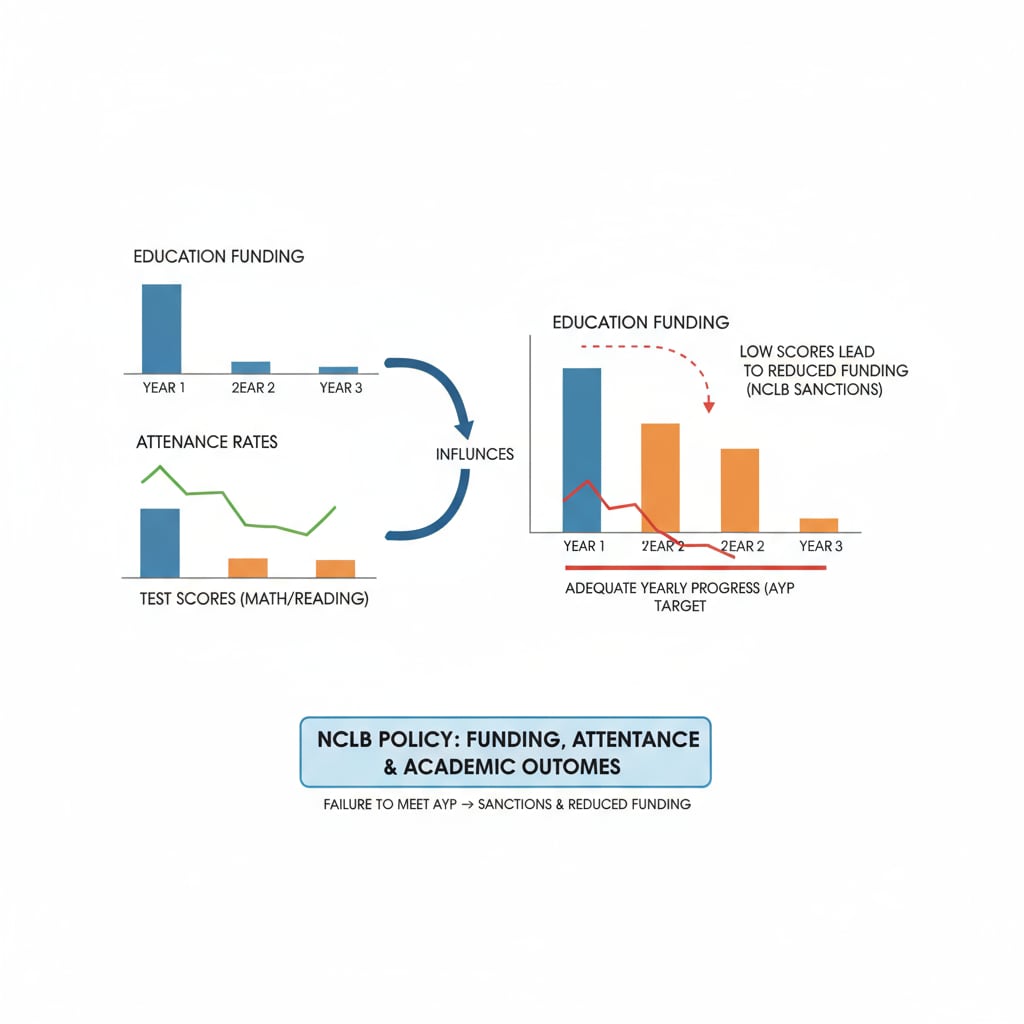In the landscape of American education, the concepts of education funding, the No Child Left Behind policy, and test scores are intricately intertwined. The No Child Left Behind (NCLB) policy, which aimed to ensure every student received a quality education, brought about a new era in federal education funding allocation. However, this policy has also led to some unexpected contradictions with school teaching quality.
The NCLB Policy and Its Funding Model
The NCLB policy, enacted in 2002, was a significant step in federal education reform. It aimed to hold schools accountable for student performance by tying federal education funding to student achievement, as measured by standardized test scores and school attendance rates. According to Wikipedia’s entry on the No Child Left Behind Act, schools that met or exceeded the set performance targets were eligible for increased funding, while those that did not faced sanctions.

The Impact on Teaching Quality
This funding model, however, has had some negative implications for teaching quality. Teachers, under pressure to improve test scores, may focus on teaching to the test rather than fostering deep understanding and critical thinking skills. For example, lessons may be centered around rote memorization of facts and repetitive practice of test-taking strategies. As a result, students may be able to perform well on standardized tests but lack the broader knowledge and skills needed for real-world success. Britannica’s education topic page provides insights into the broader context of educational quality.

Moreover, the emphasis on attendance for funding purposes may lead schools to prioritize getting students in the classroom rather than addressing underlying issues that may affect learning, such as student engagement and well-being.
Readability guidance: In this section, we’ve presented the problems in a clear and straightforward manner. The paragraphs are short, and we’ve used examples to illustrate the points. Transition words like ‘however’ and ‘for example’ have been used to make the flow smooth.
As schools strive to meet the requirements of the NCLB policy to secure funding, they are often caught in a dilemma. On one hand, they need to improve test scores and attendance to receive adequate resources. On the other hand, they also want to provide a well-rounded education that nurtures students’ creativity and intellectual growth. This contradiction highlights the need for a reevaluation of the education funding policy.
Some educators and policymakers are now exploring ways to give public schools more autonomy in educational decision-making. This could involve developing alternative funding models that are not solely dependent on standardized test scores and attendance. By allowing schools to focus on their unique student needs and educational goals, it may be possible to break the cycle of teaching to the test and improve overall teaching quality.
In conclusion, the No Child Left Behind policy, with its focus on education funding tied to test scores and attendance, has created a complex web of contradictions in the realm of school teaching quality. As the education landscape continues to evolve, finding a balance between accountability and quality education remains a crucial challenge.


